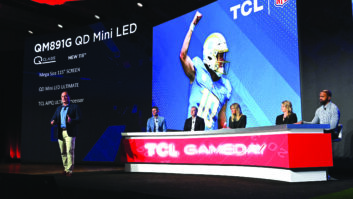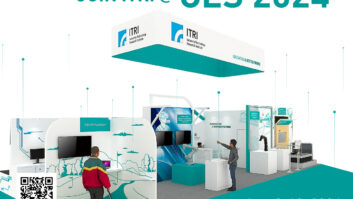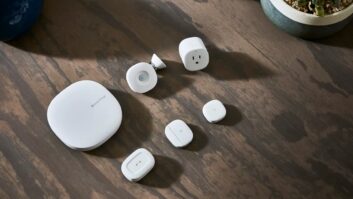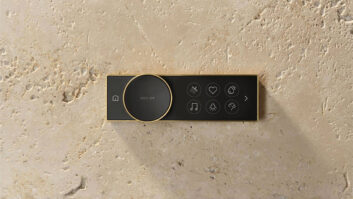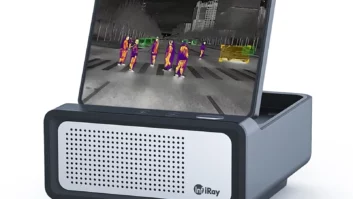Samsung is coming to International CES with a live demonstration of an upgraded, backward-compatible over-air DTV standard that would enable broadcasters to transmit TV programs to portable and mobile devices, including cellular phones, installed car TVs and battery-powered hand-held TVs.
The A-VSB (Advanced Vestigal Side Band) upgrade to the current 8-VSB standard could be implemented by broadcasters at low cost, possibly with just a software upgrade, said John Godfrey, VP of government and public affairs for Samsung Information Systems America, a corporate R&D lab. Without hampering reception by current DTV sets, A-VSB would enable stations to broadcast HD signals to future DTV sets and portable units with improved reception while sending standard-definition (SD) to in-vehicle mobile receivers at highway speeds, he contended.
Samsung has teamed with Sinclair Broadcast Group to promote the standard to the Advanced Television Systems Committee (ATSC), which adopted 8-VSB as the U.S. DTV standard and has begun formal tests of A-VSB, Godfrey said. The tests could be completed in early 2007, and adoption could occur as early as the first half of 2007 if the committee likes what it sees, he said.
Without scuttling 8-VSB’s current modulation scheme, the proposed standard will improve 8-VSB’s ability to cope with dynamic, or rapidly changing, interference of the type occurring when a vehicle is in motion or when pedestrians or vehicles move past a hand-held digital TV in a public setting.
The 8-VSB system “was optimized for the living room with stationary units,” Godfrey contended. “It has not been able to transmit to car or hand-held receivers,” whose screens would freeze under such conditions, he explained.
One of the options available in the A-VSB standard, he added, would enable terrestrial broadcasters to reach homes and apartments whose over-air signals are currently blocked by tall buildings or mountains. The option would enable broadcasters to build additional towers whose signals could be synchronized with their main tower in much the same way that satellite-radio providers synchronize the signals from orbiting satellites with ground-based repeaters.
A-VSB was proposed to ATSC in December 2005 and demonstrated in April 2006 at the National Association of Broadcasters (NAB) convention. Here at CES, the invite-only demonstrations will be the first to use battery-operated hand-held TVs, which Samsung will demonstrate in moving vehicles on Las Vegas streets and highways, Godfrey said. The portable TVs, all prototypes, might also be demonstrated inside the convention center, the company said at press time.
The demo models, which will receive content from a mountain-top Sinclair Broadcast Group transmitter, feature diversity tuning and two 6-inch external antennas. “With more sensitive tuners or higher power broadcasts in the future, maybe we can get to smaller antennas or maybe even go to one antenna,” Godfrey said, but for use in a laptop or car TV, dual antennas aren’t an issue.
The first types of consumer devices incorporating A-VSB would likely be laptop cards, hand-held battery-operated TVs, cellphones, and aftermarket and OEM systems for vehicles.
The technology could compete at multiple levels with the proposed MediaFLO and DVB-H (Digital Video Broadcasting-Handheld) technologies, which were designed to deliver TV and other video content on a subscription basis to cellphones, other handheld devices, and vehicles.
Samsung telecom group is developing DVB-H and MediaFLO handsets, and cellular carrier Verizon Wireless is expected to launch MediaFLO service in select markets in 2007.
For more on how the technology works visit www.TWICE.com.






